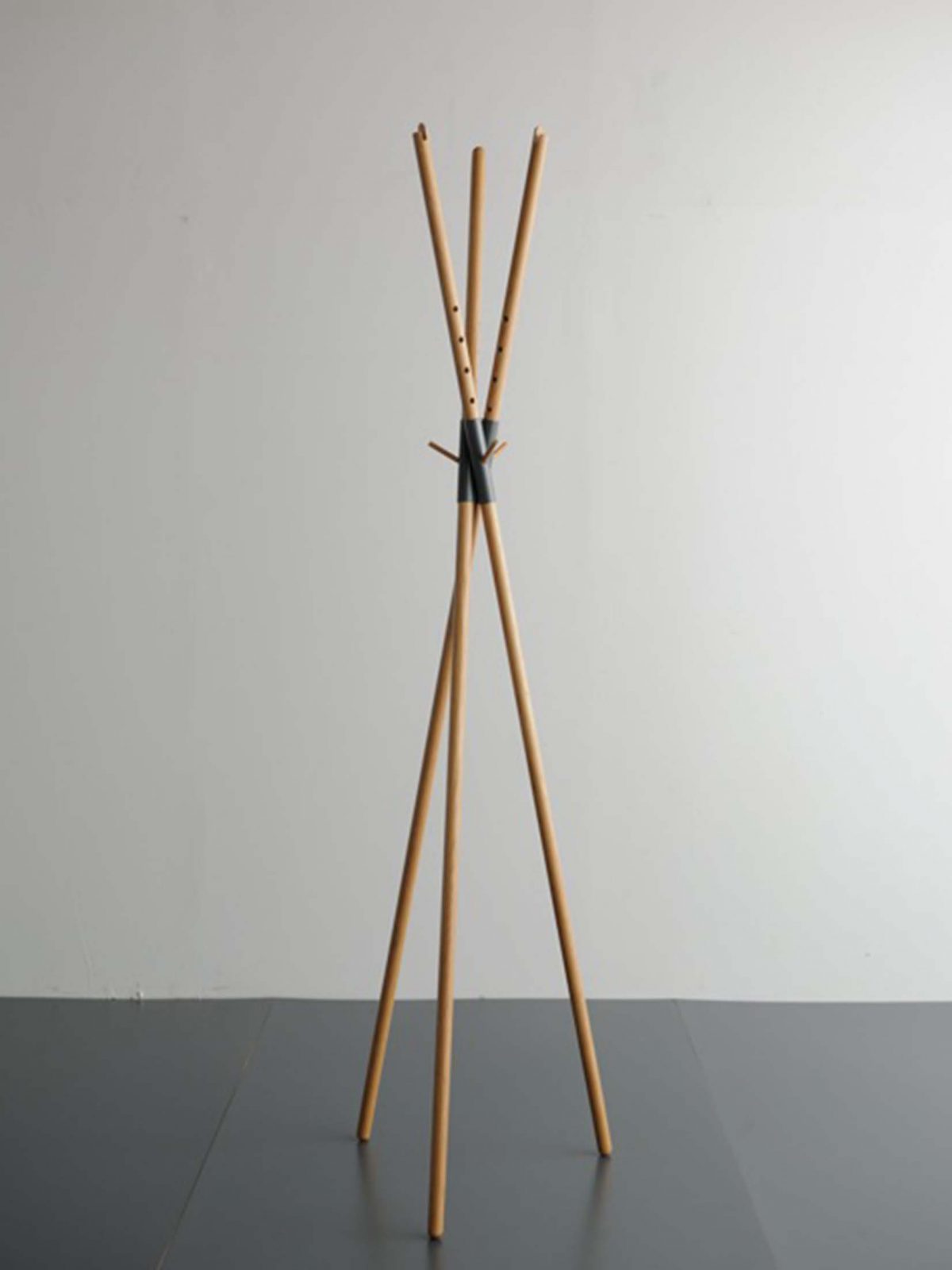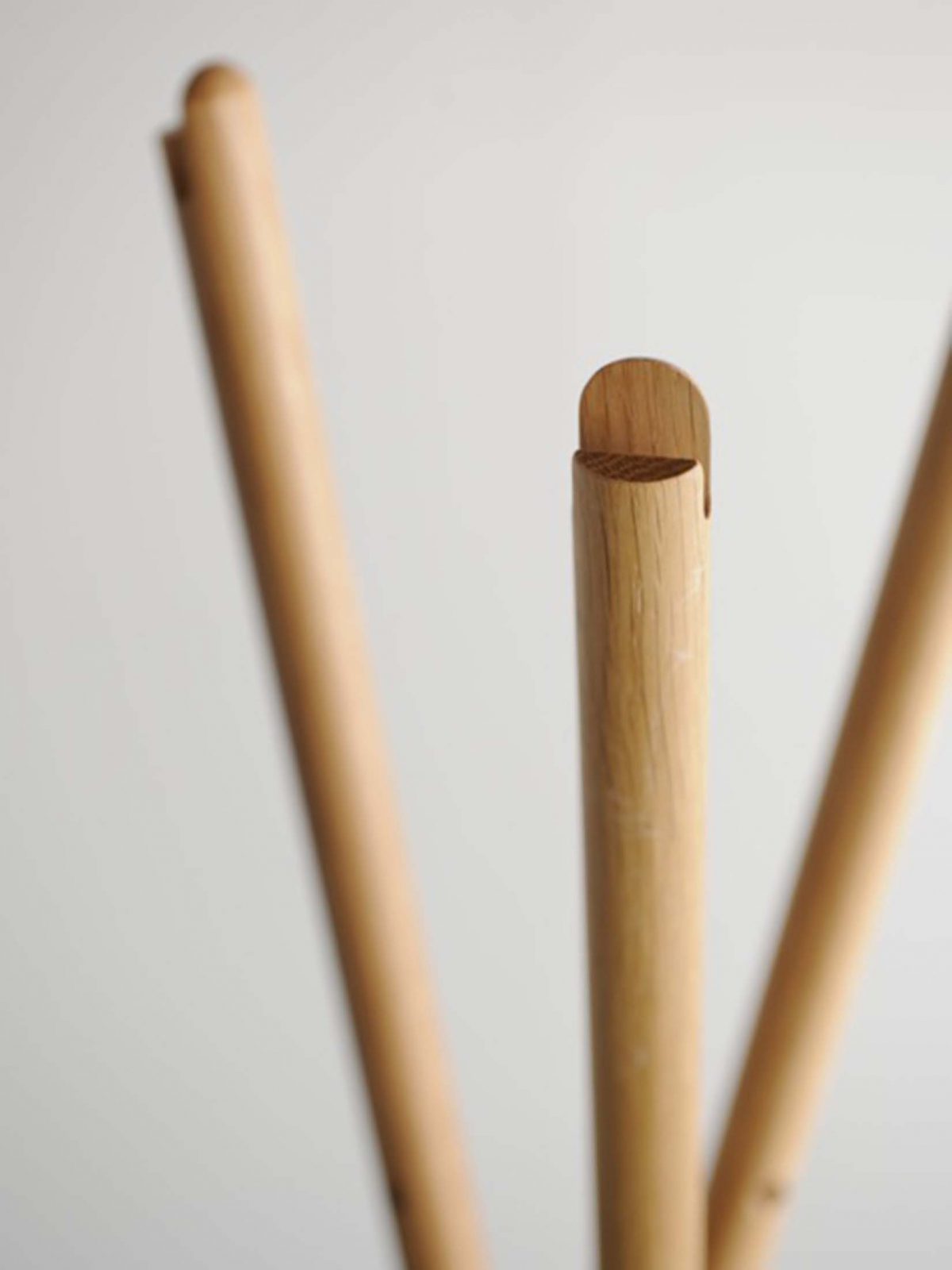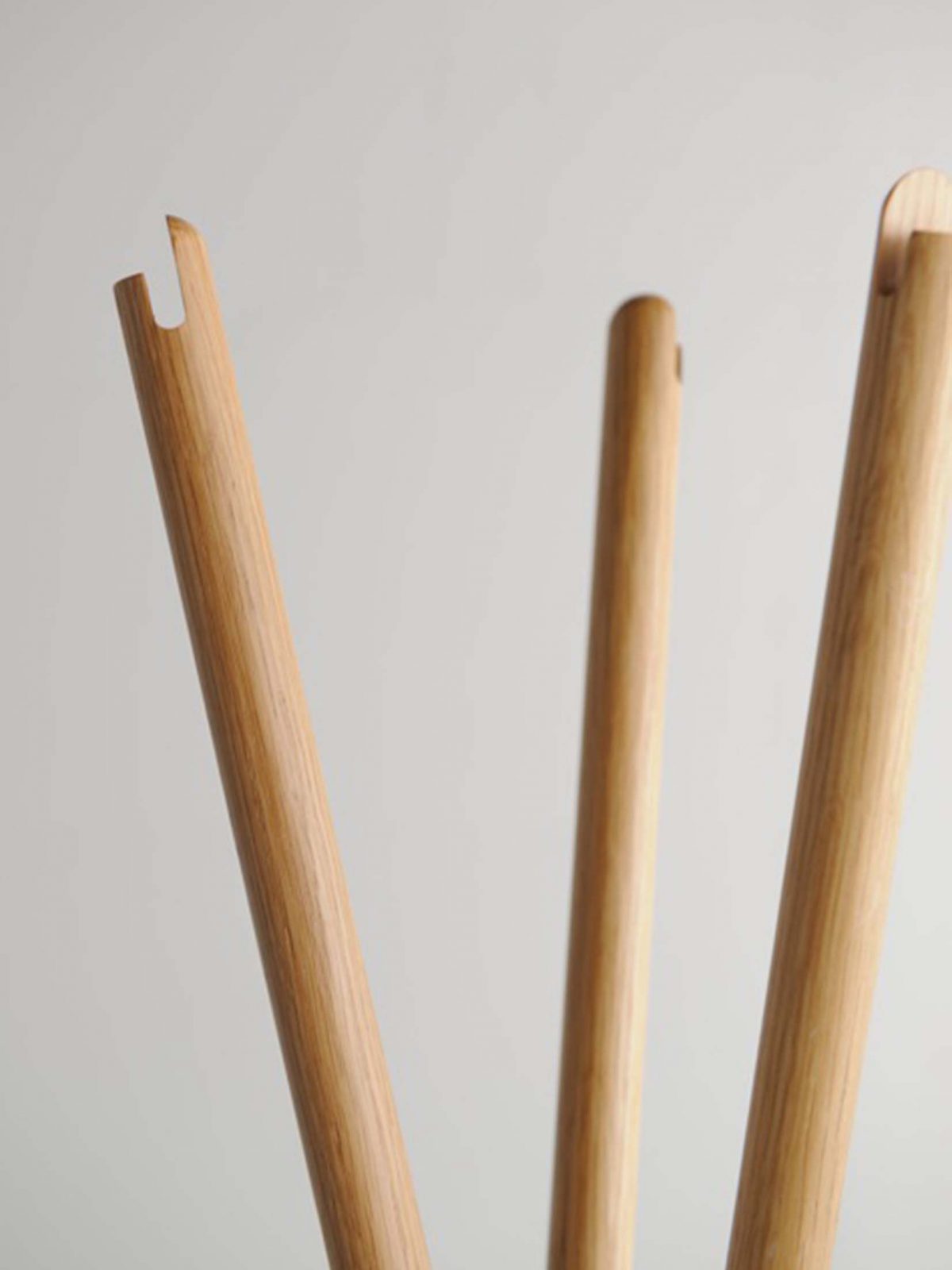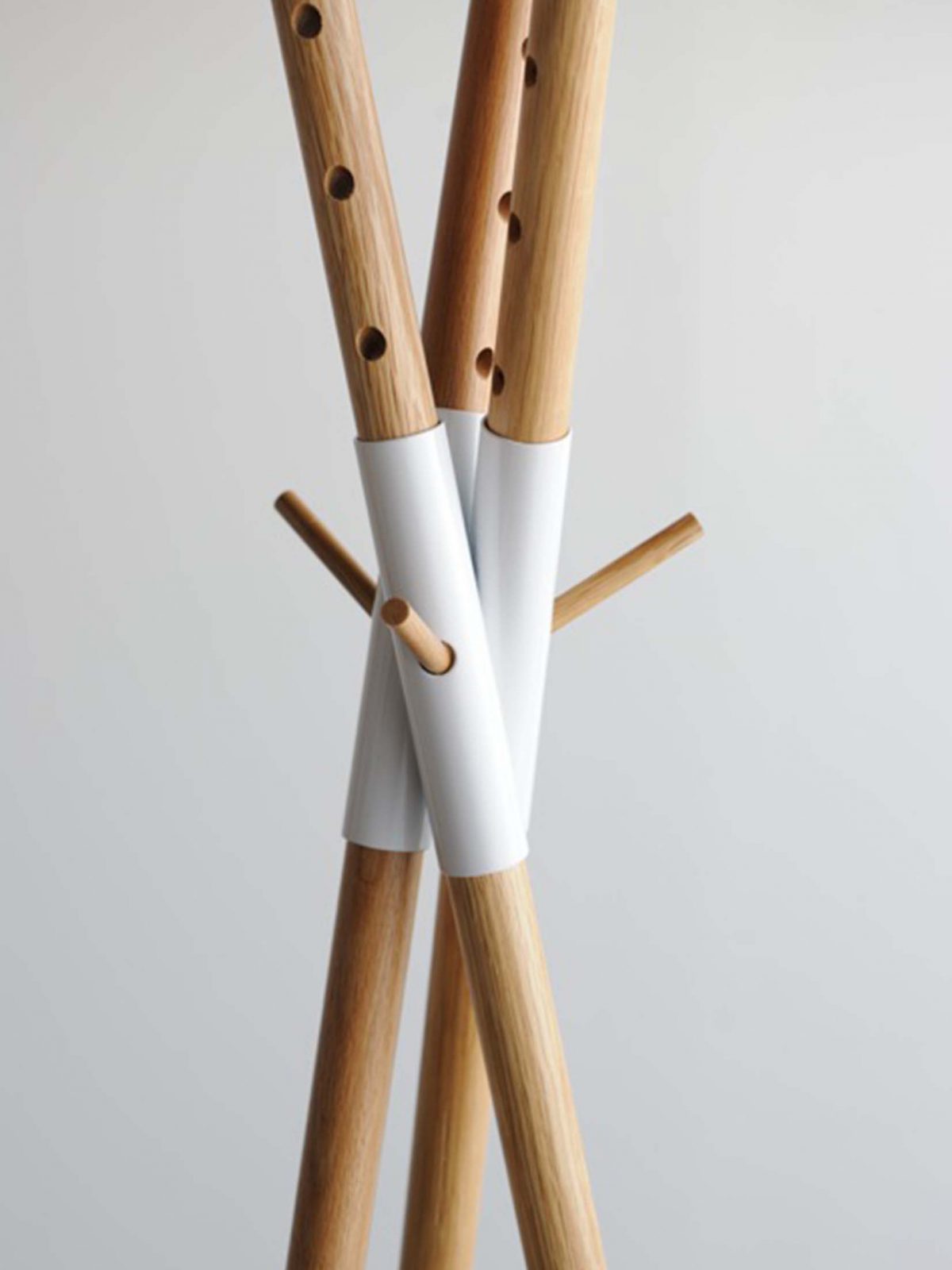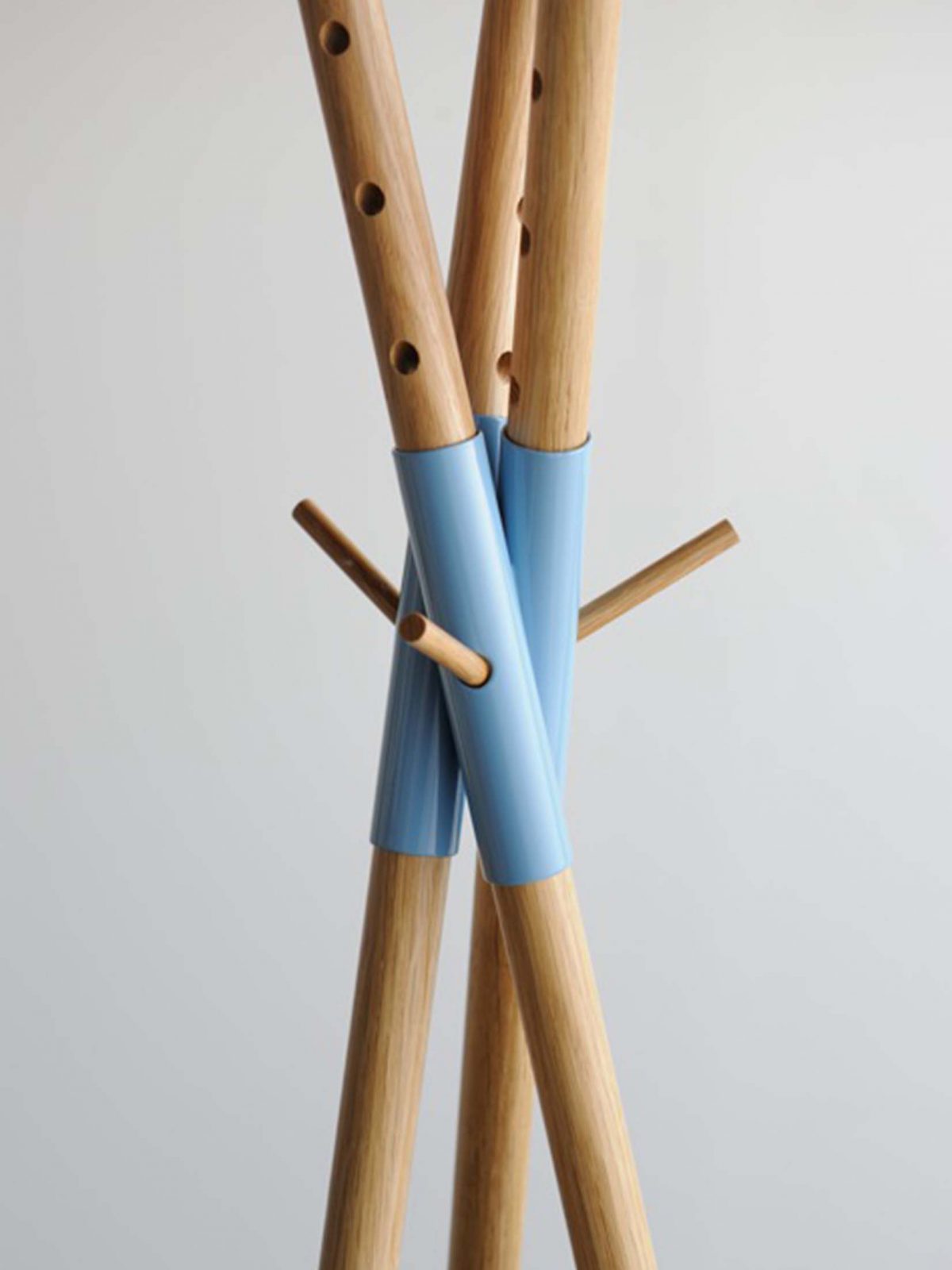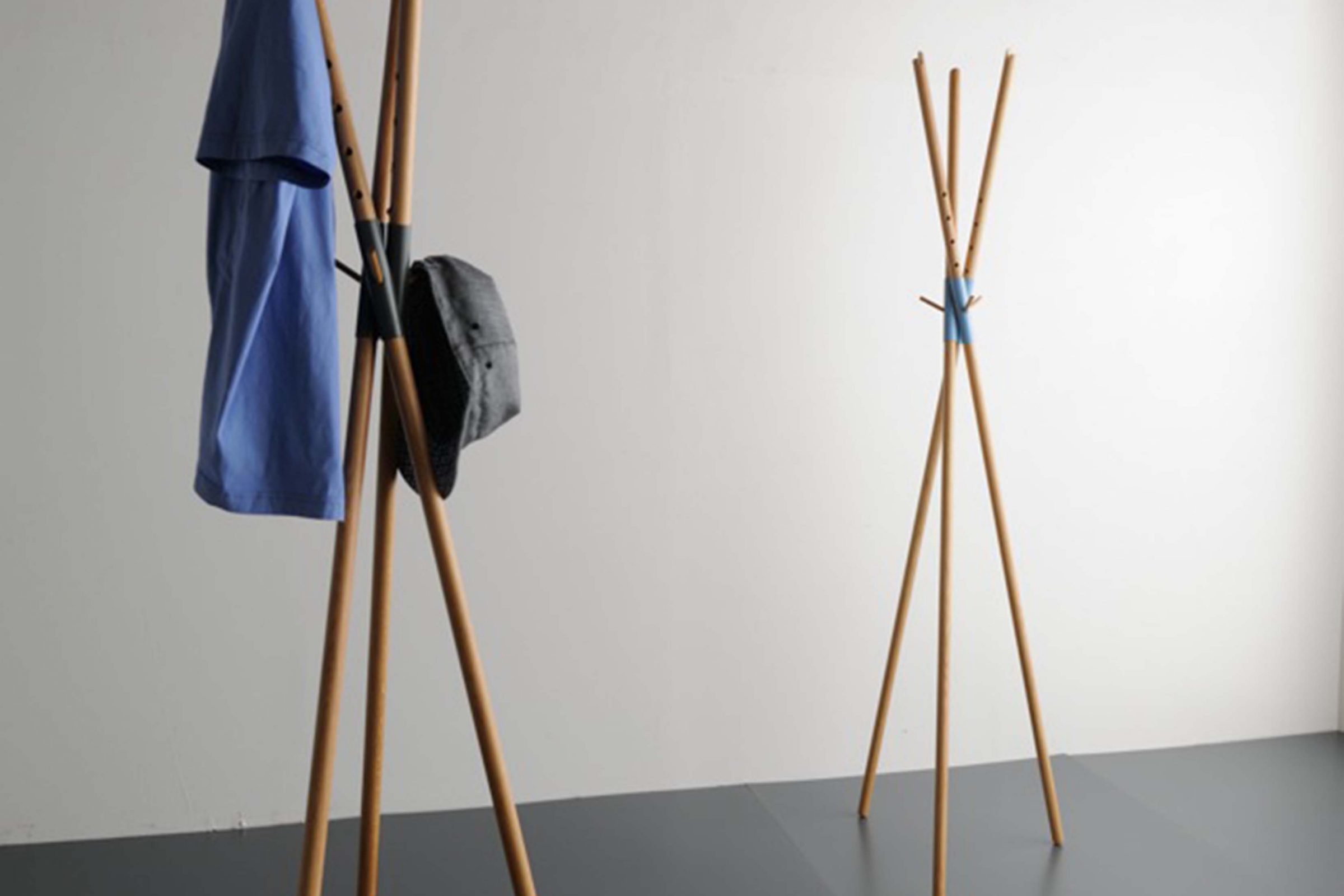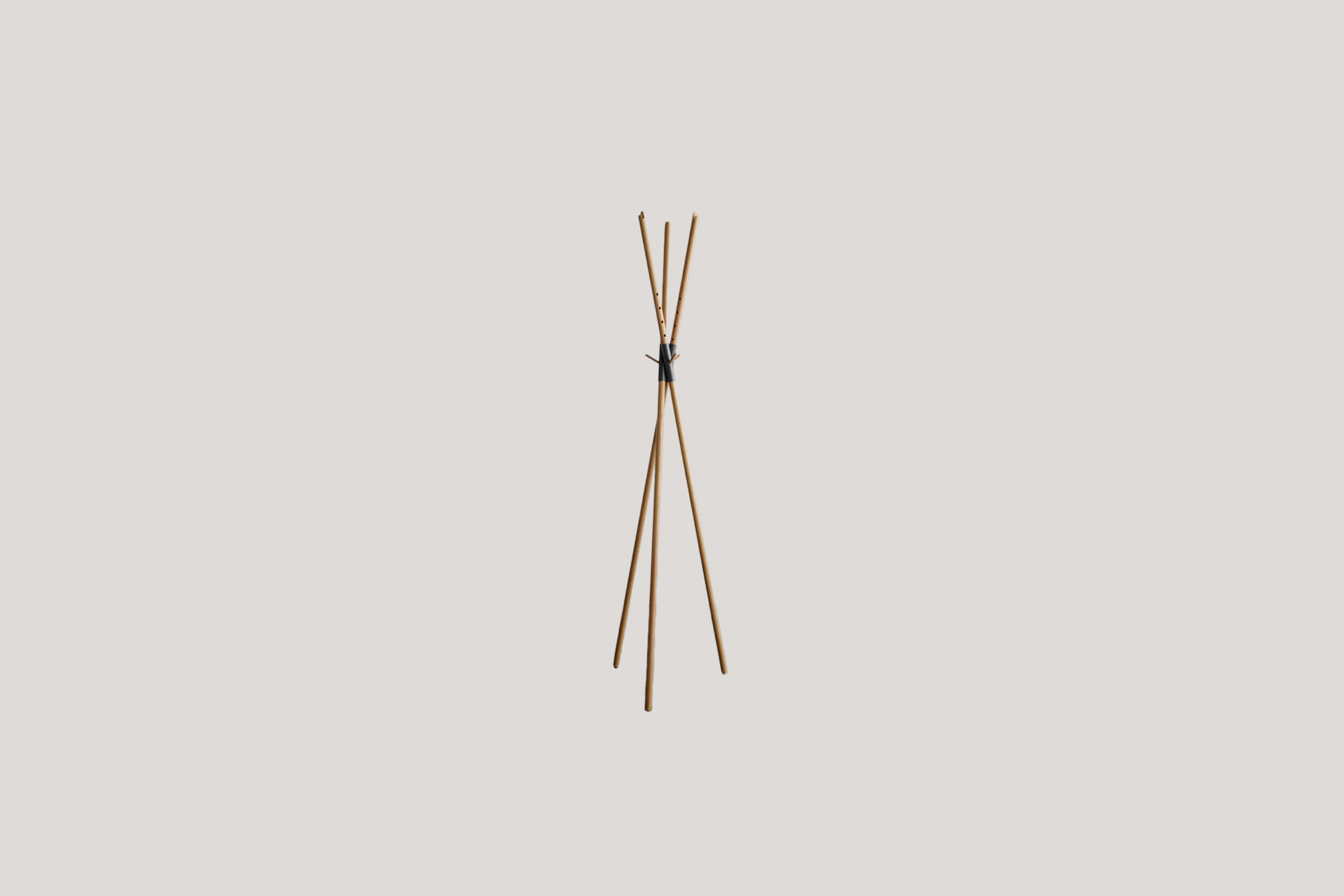PIPEKNOT HANGER for COMMOC
Design: 芦沢啓治
Client: COMMOC
Photo: COMMOC
3 本のスチールのパイプを使ったジョイント材と、そこに木材を差し込むことでつくる家具シリーズ。まずはスチールパイプによって、さまざまなジョイント材を製作することから始めている。さらにスチールパイプにぴったりと納まる木材を使い、さまざまな構造体をつくる実験をした。ダボやビスによって留めることができ、組み立てや解体は容易である。試行錯誤していく過程で、いくつかの家具のデザインが生まれた。「Pipeknot Hanger」と「TRE」は商品化され、現在も生産を続けている。また、やや形状は異なるが「IKEA PSCOLLECTION」のシェルフにも、アイデアはつながっている。Pipeknot Hanger は最初に商品化されたものだが、丸いパイプを鑞付けすることで溶接部分を美しく見せ、パイプと木材を細い木のダボを使って固定している。またそのダボは、フックとしても使える。
Design: Keiji Ashizawa
Client: COMMOC
Photo: COMMOC
Pipeknot Hanger is a simple, three-legged coat stand that is part of a series of furniture created from utilising the innovative ‘pipeknot’ joint. The idea for this hanger first emerged from experimenting with producing various shapes of joints based on steel pipes. The next step was to play around with the different forms that could be created by attaching wood into the joints. Because dowels and screws could be used to secure the entire structure, this made it easy to assemble and disassemble. Through this process of trial and error, several furniture designs were born – with the 'Pipeknot Hanger' and 'Tre" becoming products that are still being manufactured now.
Although it has a slightly different shape, the 'Wall Shelf', which Keiji Ashizawa designed for the experimental IKEA PS Collection, is also inspired by this idea. Out of all these products, the Pipeknot Hanger was the first to be realiSed commercially. Showing the beauty of round pipes welded together, the basic three-pipe assembly holds the legs in place with wooden pegs that double as hooks for bags and hats. Betraying such a simple appearance, the hanger uses space three dimensionally and provides a surprisingly large storage space. While it is highly functional, it also creates beauty by neatly laying out the hung clothes.
